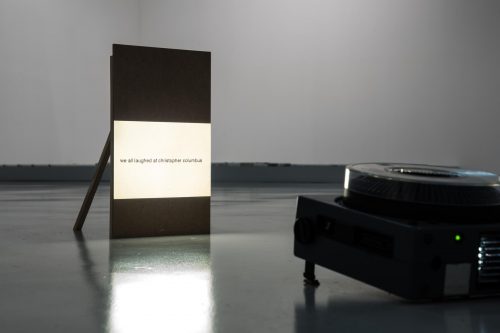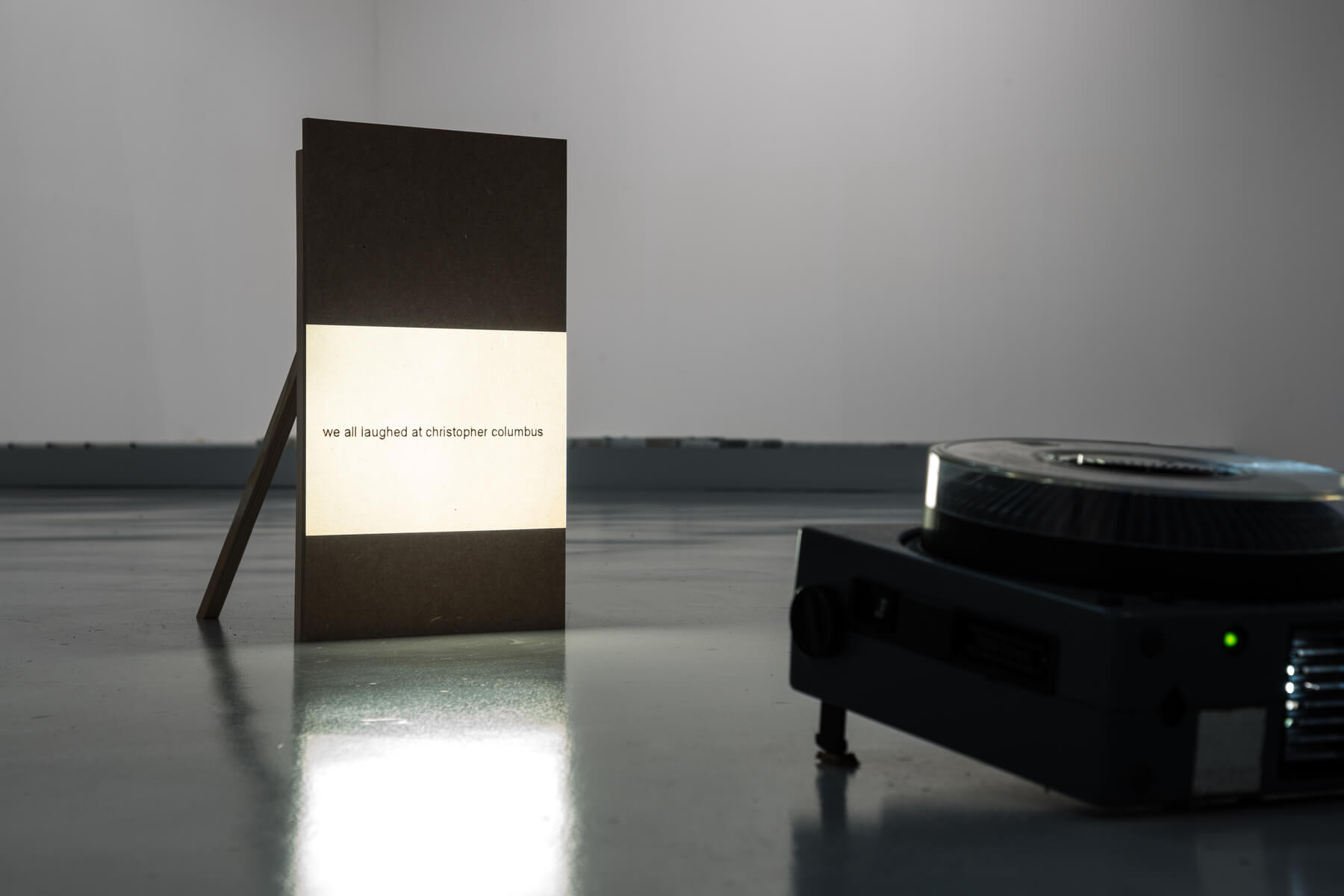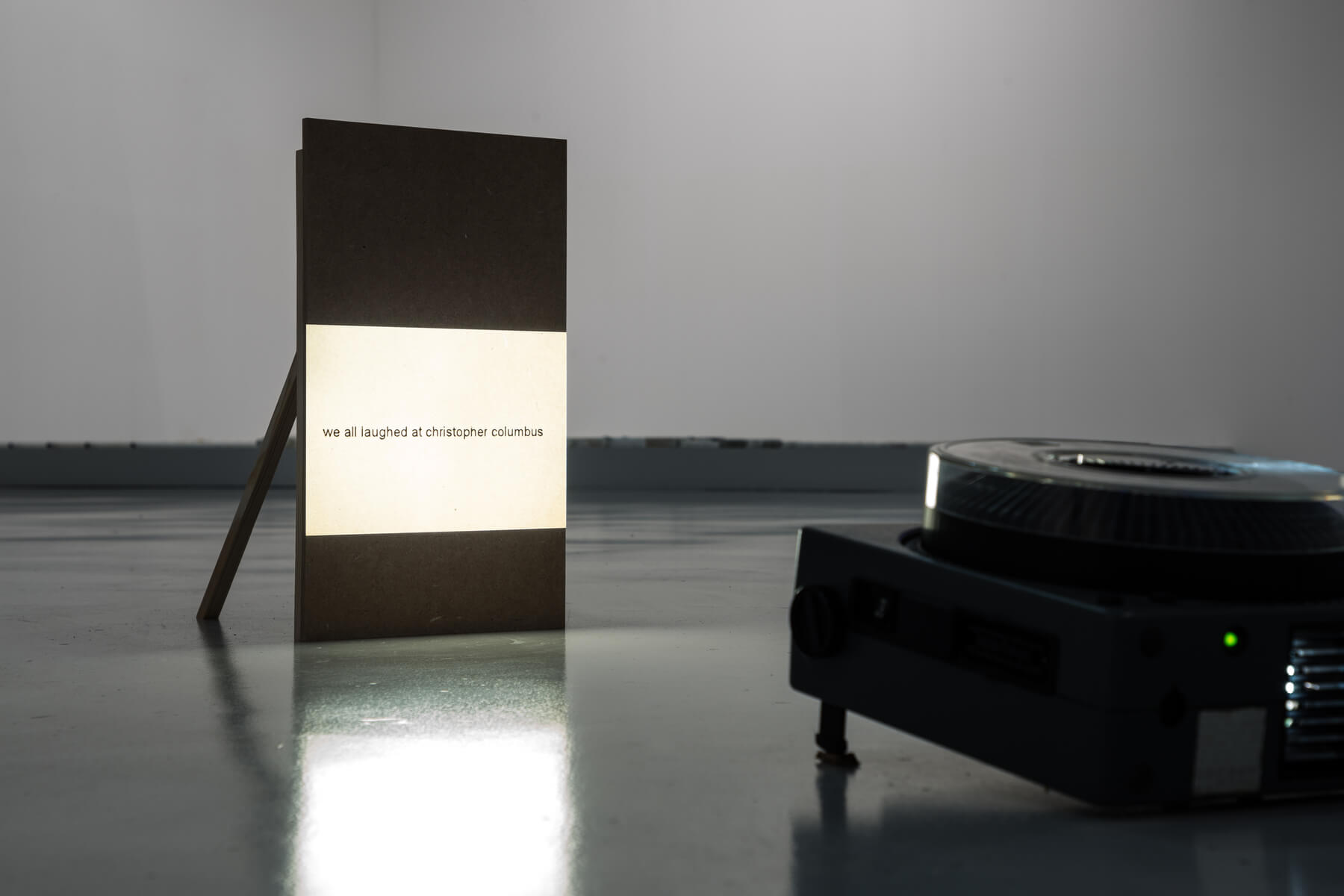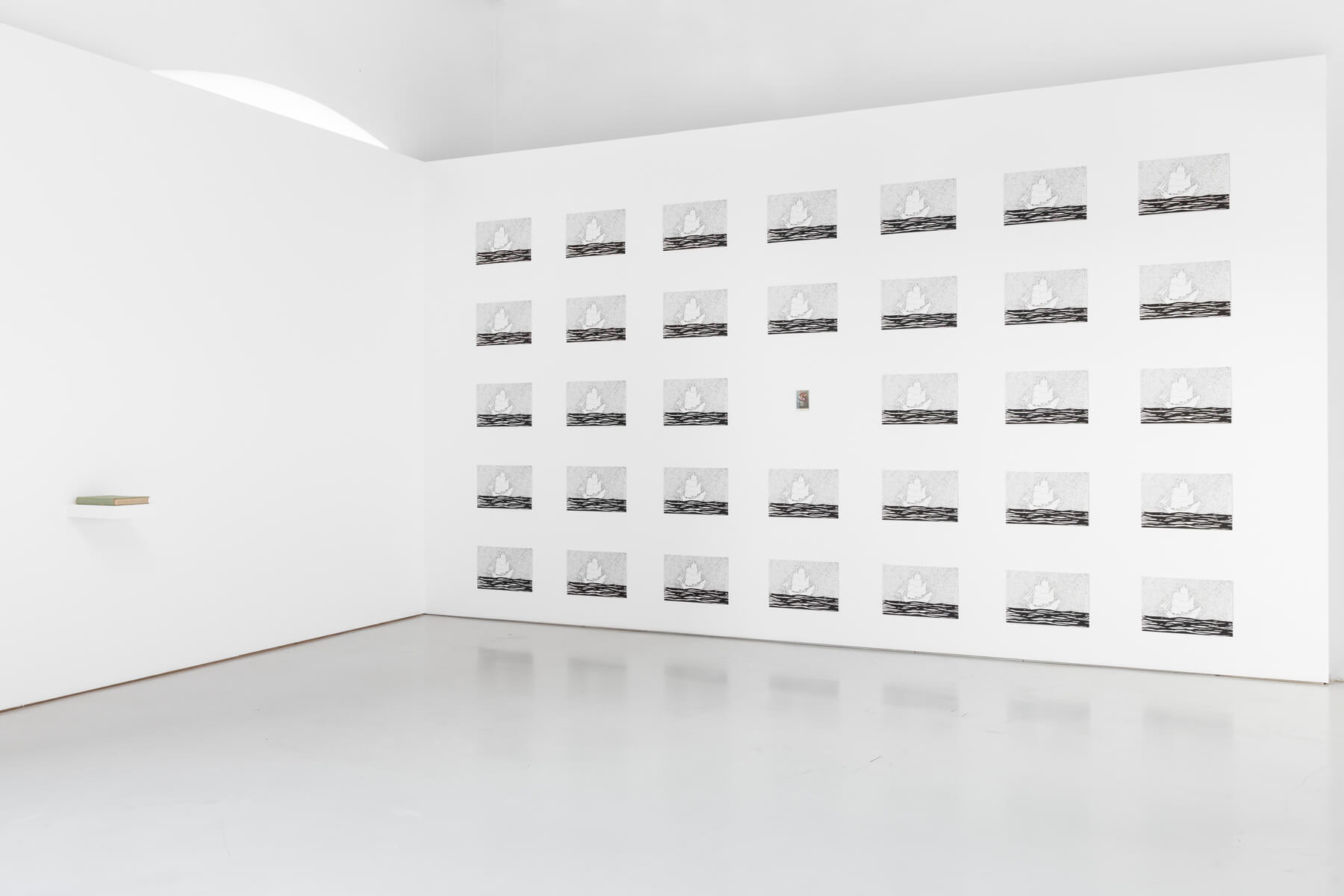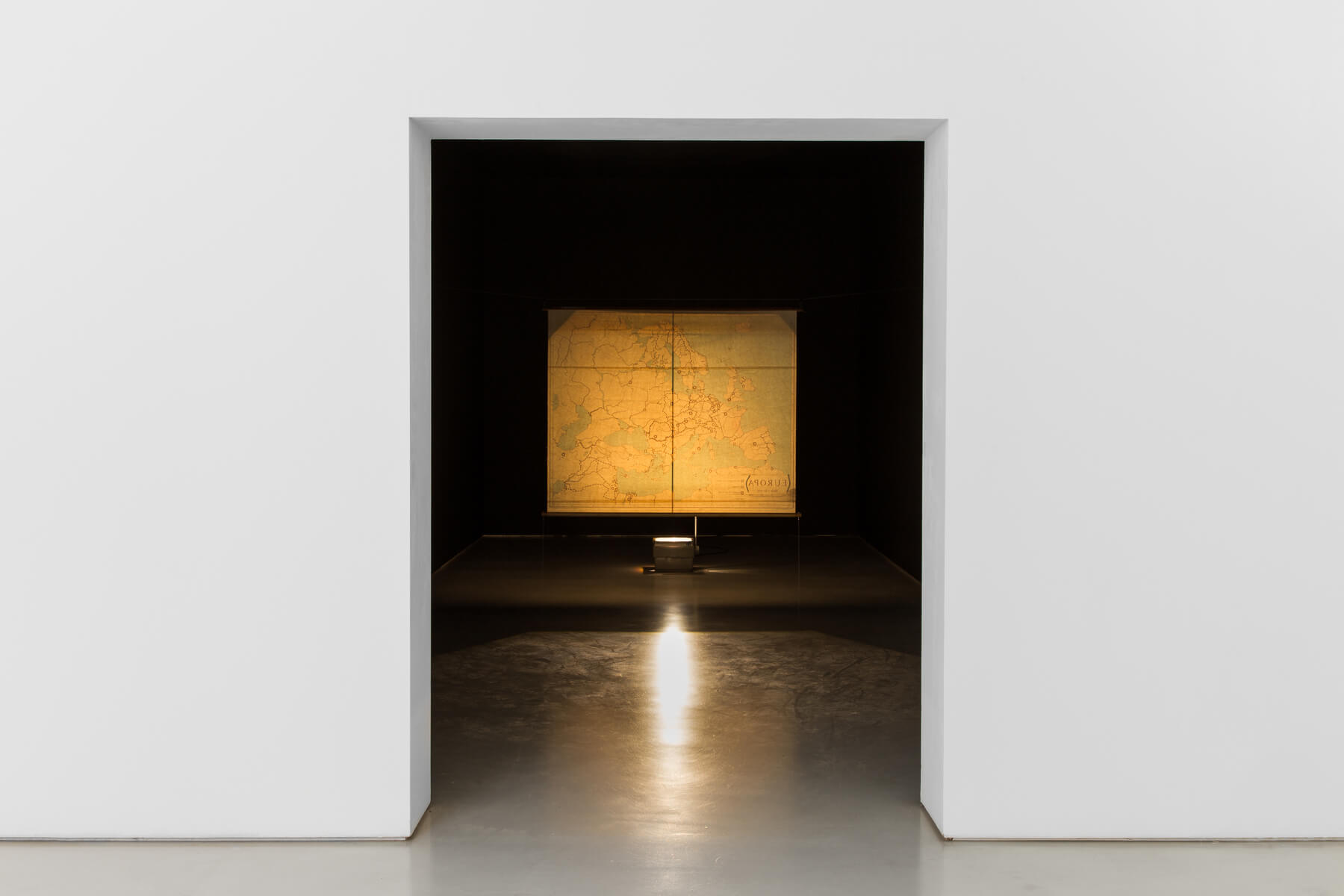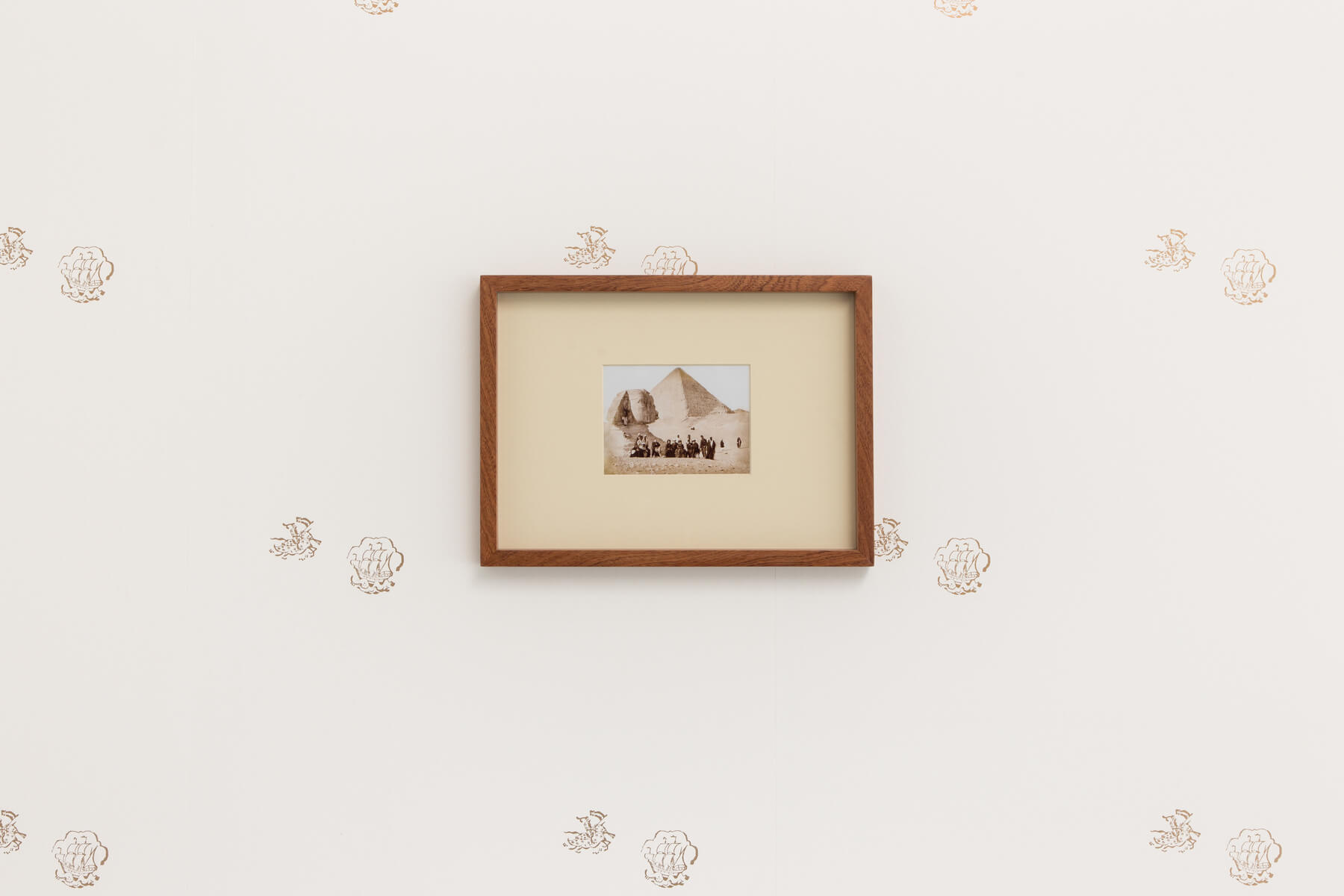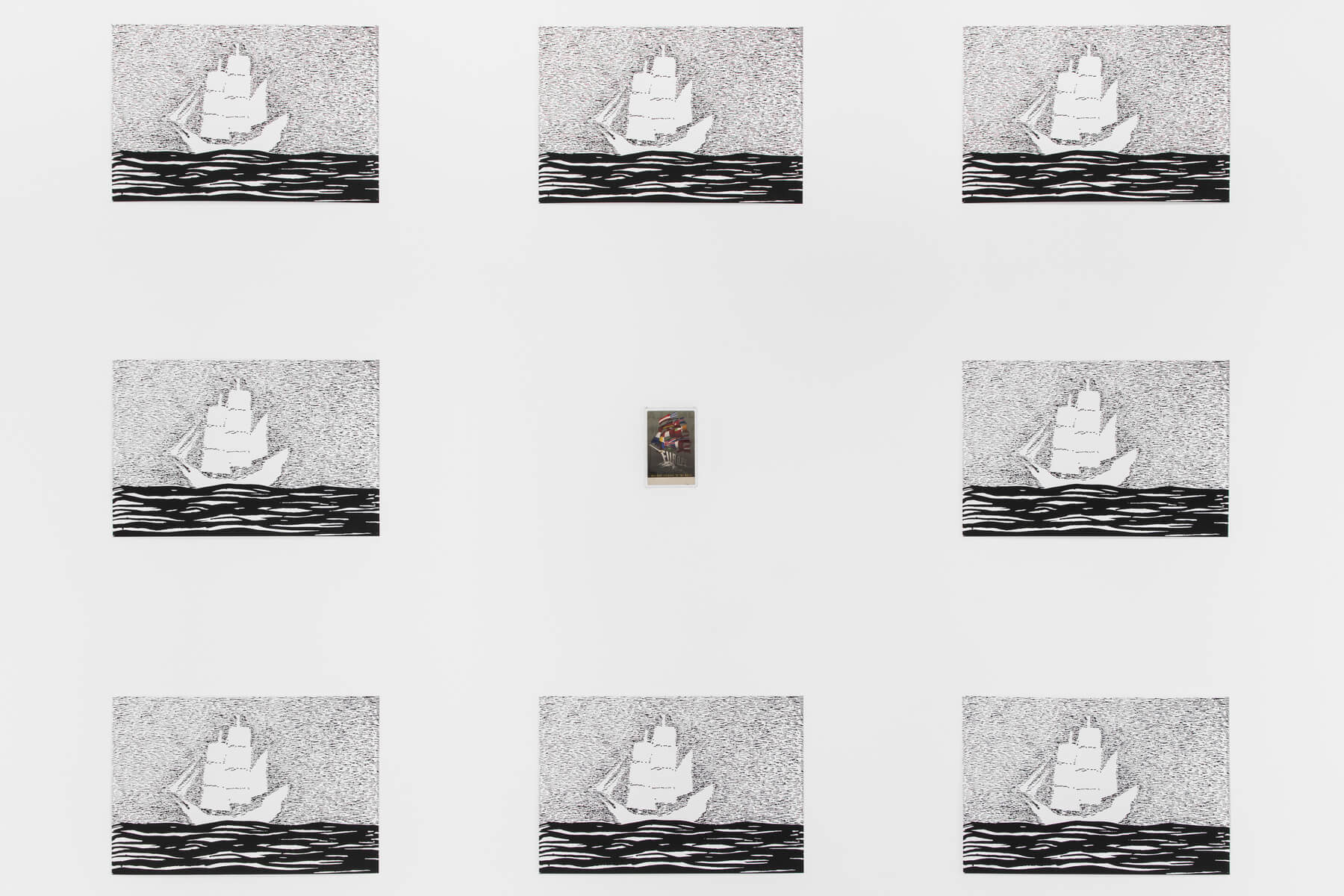– 23.09.2018
It is possible to think of an exhibition in terms of a transitional territory in which new possibilities of social, economic, political and even historical restructuring are proposed. A unique, unsystematic space located outside the global order, where a cross-territorial imagination enables the production of an ephemeral utopia. A temporary place that offers us critical perspectives. La Neblina, the first solo exhibition of Runo Lagomarsino in Portugal, aspires to precisely this kind of crossterritoriality in which geographical and historical order is called into question.
In his work, Lagomarsino investigates the geopolitical and historical models that determined western colonial modernity, shrewdly revealing its structures with humour and scathing irony. Through metaphors, abstractions and fictions, the artist destabilises the widely accepted notion of history as a set of linear narratives, offering a series of works that question how we write and construct history and undoing the dominant concept of world order based on the North/South dichotomy.
Christopher Columbus and Europe are two central figures in this exhibition, with the first having established the world order in which the West became known as the centre of the globe (a notion which persists to this day). Thus, we begin this exhibition with one of Columbus’ Caravels represented on patterned wallpaper and finish with a film that documents the artist and his father throwing a dozen eggs illegally imported from Argentina at the giant statue of Columbus, erected in Seville to celebrate the 500th anniversary of America’s ‘discovery’ and the consequent birth of the ‘New Man’. The wallpaper also features a representation of a Templar Knight, in a reference to another process of ‘discovery’ of the ‘new world’. With economy of means and images, it represents the conquest, the evangelisation and the domination of the world from East to West.
This idea of discovery is ridiculed in the book La Decouverte de la Terre, whose cover has been partially eaten away by insects. A surface that is transformed into a map drawn by invisible and chaotic forces that weaken the structure of the book itself to the point that, one day, nothing remains.
In La Neblina, the work that gives the title to the exhibition, we again find the image of a boat sailing the sea, repeated time and again. A black and white image, calm and silent, which contrasts with the small postcard from 1947 on which Europe is presented as a powerful boat roaring along the sea.
Americamnesia is an installation in which two stamps – one with the word America and the other with Amnesia – overlap and cover the wall in an orderly, rational and linear manner. Each stamp on the wall is like a tattoo, imprinted in a repetitive, violent and coercive manner. Contrary to the idea of ‘learning from history’, the whole exhibition – and this work in particular – speaks of recurrent and overwhelming amnesia. Installed on two opposite walls, this work imprisons viewers and confronts them with their own forgetfulness, though not without involving us in a mockery of Christopher Columbus.
In the Wikipedia article on the Pergamon Museum, Berlin’s largest museum and one of Germany’s largest, the collection is described as “art and archaeological treasures […] excavated under German supervision.” Art of Classical, Oriental and Islamic antiquity constitute the three main sections of the collection. Runo Lagormarsino asked the museum for their used light bulbs and in the work Pergamon, he arranges them in order of size. The used light bulb is presented as a powerful metaphor for the invisible power of the West that brings unto itself the treasures of other civilisations and illuminates them in order that it might see the so-called ‘civilised’ world with the ‘correct’ light and geography.
Although the exhibition provides a space of critique and interrogation, the walls of the Galeria Av. da Índia continue to carry within them an (invisible) geography, a history that remains in the present; after all, it is located opposite the Tower of Belém, a symbolic place from which Prince Henry the Navigator made his departure on the great adventure of the ‘discoveries’.
– Filipa Oliveira, curator
– 23.09.2018

